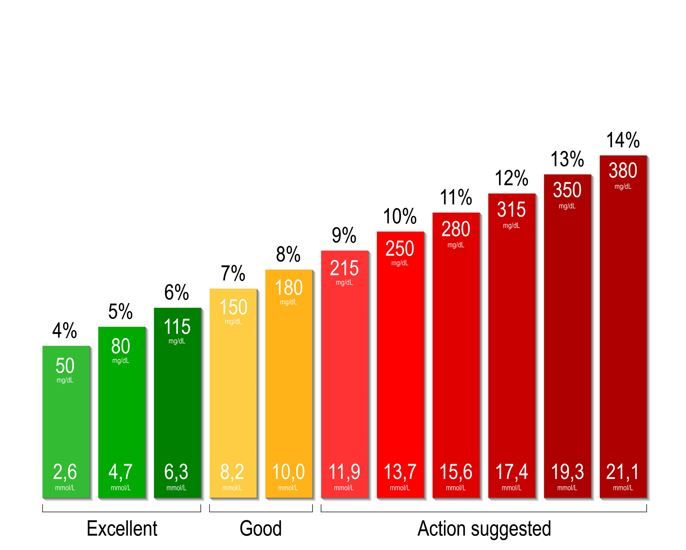Flash CGM Improves Time in Range, HbA1c in Patients with T2D Using Noninsulin Therapies
Among adults with type 2 diabetes (T2D) who were not treated with insulin the use of intermittently scanned continuous glucose monitoring (isCGM) was associated with overall improved glycemic control compared with use of diabetes self-management education (DSME) support alone, according to findings from the IMMEDIATE study (IMpact of flash glucose Monitoring in pEople with type2 Diabetes Inadequately controlled with non-insulinAntihyperglycaemic ThErapy).
©designua/Adobe Stock

Specific study outcomes reported in the journal Diabetes, Obesity and Metabolism included a 10% increase (2.4 hours/day) in time spent in target glycemic range (TIR) and an 8.1% decrease in time spent above target range (TAR) among isCGM users. Investigators also noted an adjusted difference in HbA1c between treatment groups of 0.03%.
The research team, led by Ronnie Aronson, MD, founder, and chief medical officer of LMC Diabetes & Endocrinology, in Toronto, also found that among the study participants with baseline HbA1c ≥9% the observed treatment effect was even greater—as high as 4.9 hours/day of TIR. The greater improvement in TIR is of particular note because a 5% gain is considered a “clinically meaningful” increase, the authors write.
Control is a T2D challenge
Aronson and colleagues cite the challenge to achieve consistent glycemic control many patients with T2D face as well as the inadequacy of blood glucose self-monitoring and quarterly HbA1c measures to capture important variability in glycemic levels. CGM, long the standard of care for persons with type 1 diabetes on intensive insulin regimens and also proven effective among those with T2D using only basal insulin therapy, when studied in patients with T2D on noninsulin treatments is associated with inconsistent findings. Further, the majority of studies have been observational in design.
The team’s objective for the randomized, controlled IMMEDIATE study was to evaluate the impact of isCGM on hyperglycemia and patient’s acceptance of the technology, in addition to DSME, in adults not treated with insulin for T2D,
The study was conducted at 6 Canadian diabetes specialty centers with recruitment and screening running from September 8, 2020, to December 24, 2021. Eligibility required T2D duration of ≥6 months, baseline HbA1c ≥7.5%, treatment with at least 1 noninsulin antihyperglycemic agent, and no prior experience with CGM. Researchers randomized participants in a 1:1 ratio to isCGM+DSME or to DSME alone. CGM devices were blinded. All participants attended identical educational visits with a CDE and completed the Glucose Measurement Satisfaction Survey (GMSS), the Diabetes Distress Scale, and several other behavioral measures.
Courtesy LMC Diabetes & Endocrinology

Aronson and colleagues specified the primary outcome as the difference in percentage mean TIR (glucose 70-180 mg/dL) measured using blinded CGM recording during the final 2 weeks of the 16-week study period between the intervention and control groups. Among several secondary outcomes of interest were mean HbA1c, time spent below range (TBR; <70 mg/dL), TAR (>180 mg/dL), and device satisfaction via the GMSS.
The final cohort of 116 participants had a mean age of 58 years, T2D duration of 10 years, mean baseline HbA1c of 8.6%, and 36.2% were women, according to the study. At study enrollment, participants were using an average of 2.6 noninsulin therapies.
FINDINGS
When assessed at 16 weeks, mean TIR was significantly greater among participants in the isCGM+DSME arm by 9.9% (2.4 hours) (95% CI, −17.3% to −2.5%; P<.01) and TAR was significantly lower by 8.1% (1.9 hours) (95% CI, 0.5% to 15.7%; P =.037) vs the DSME-only group.
Aronson et al report that there was improvement in HbA1c in both groups with isCGM at 7.6% (from 8.5% at baseline) and DSME at 8.1% (from 8.7%) at 16 weeks. This translated into a greater mean reduction in the isGGM+DSME group of 0.3% (95% CI, 0% to 0.7%; P = .048) vs the DSME-only group.
Reports of hypoglycemia were low in both groups as was TBR, with no significant difference between the groups, according to the study. Neither group reported increase in diabetes distress. Glucose monitoring satisfaction was higher among isCGM users (adjusted difference −0.5 [95% CI, −0.7 to −0.3], P < .01).
“The strengths of this study include its novel selection of an outcome, percentage TIR, that is most relevant to the technology being evaluated, and arguably most relevant to future care directions in diabetes. The present trial sought to include a larger breadth of the type2 diabetes population by including individuals using even one non-insulin antihyperglycemic therapy. Targeted DSME may have particular benefit for new users of isCGM/rtCGM and the comprehensive education programme that was developed for participants…may have been a design strength,” concluded Aronson et al.
Reference: Aronson R, Brown RE, Chu L, et al. IMpact of flash glucose Monitoring in pEople with type2 Diabetes Inadequately controlled with non-insulin Antihyperglycaemic ThErapy (IMMEDIATE): a randomized, controlled trial. Diabetes Obes Metab. 2023;25:1024-1031.
doi:10.1111/dom.1494